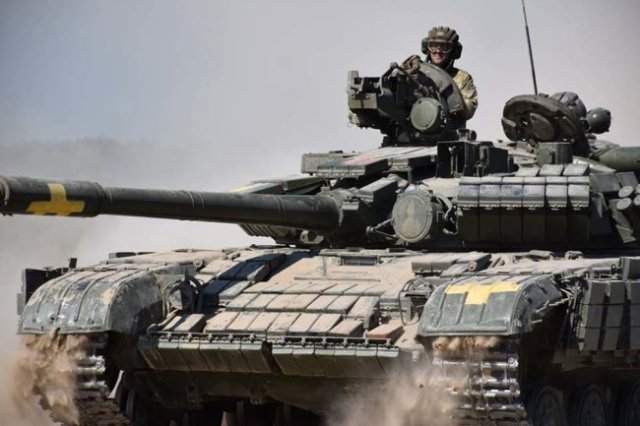As in the case of light wheeled armored vehicles, the vast majority of the APU tank fleet consists of old Soviet tanks. The main and most massive is the T-64BV. According to various sources, there are slightly more than four hundred such armored vehicles in the troops.
Of these, only a relatively small part underwent major repairs after 1991. According to their tactical and technical characteristics, they correspond to the level of the mid-80s.
It must be remembered that the basic model was adopted even earlier - in 1976, and the main innovation was only the implemented mounted dynamic protection, which currently no longer meets modern requirements.
The same applies to the T-72AV and T-72B1, there are about a hundred units. And the first, apparently, the majority.
At the storage bases, which are currently real scrap dumps, there are also half a thousand T-64 and T-72 of different modifications. However, experts have great doubts that it is possible to resuscitate them at all.
In order to somehow tighten the capabilities of the "sixty-fourth", in 2017 they were subjected to a limited budget modernization, which consisted in installing a thermal imager, new means of communication and navigation. They wrote about the use of "reactive armor" "Knife". In total, a little more than 200 tanks received such a revision.
In Kiev, the T-72 battalion was similarly improved, but cheaper infrared night sights were installed on them.
Slightly more than 80 T-80BVs with gas turbine engines were received by airmobile units and the Marine Corps.
Due to the shortage of serviceable equipment, the Bulat BM, which was considered unsuccessful and suffered significant losses in the Donbas, was removed from storage.
A small number of T-64B1M and T-64BM2 intended for supplies to Africa are being operated, the latter received 1000-horsepower engines.
According to experts, Ukrainian tank units can perform only limited tasks and will incur significant losses in the event of collisions.
Alexey Brusilov

